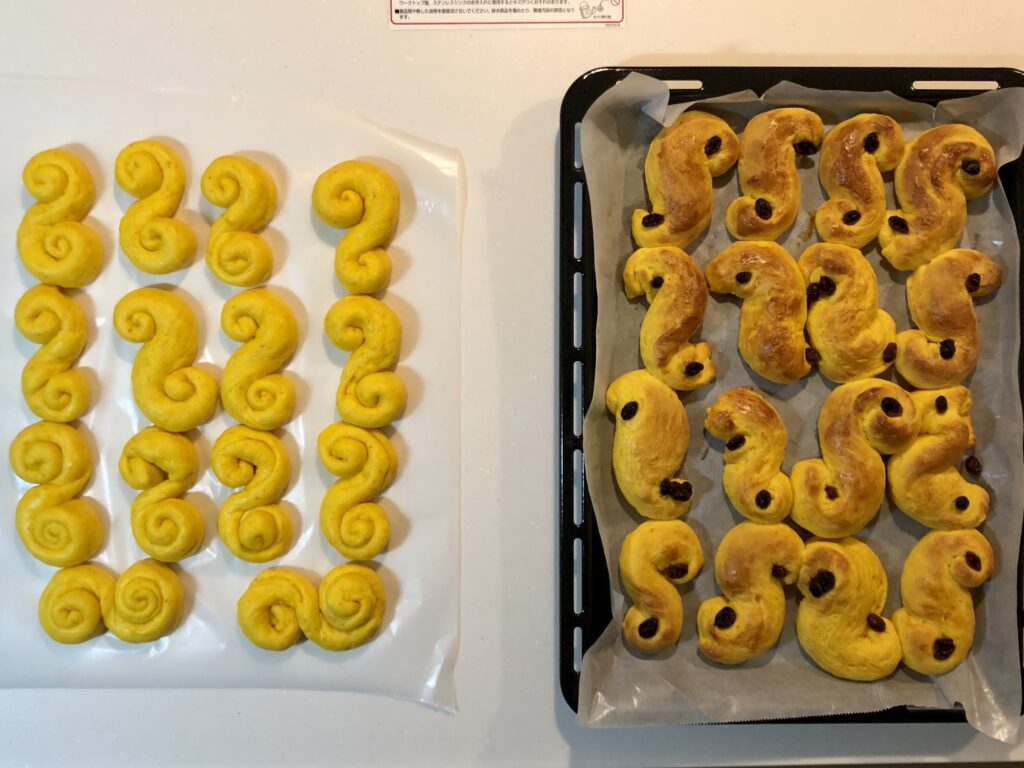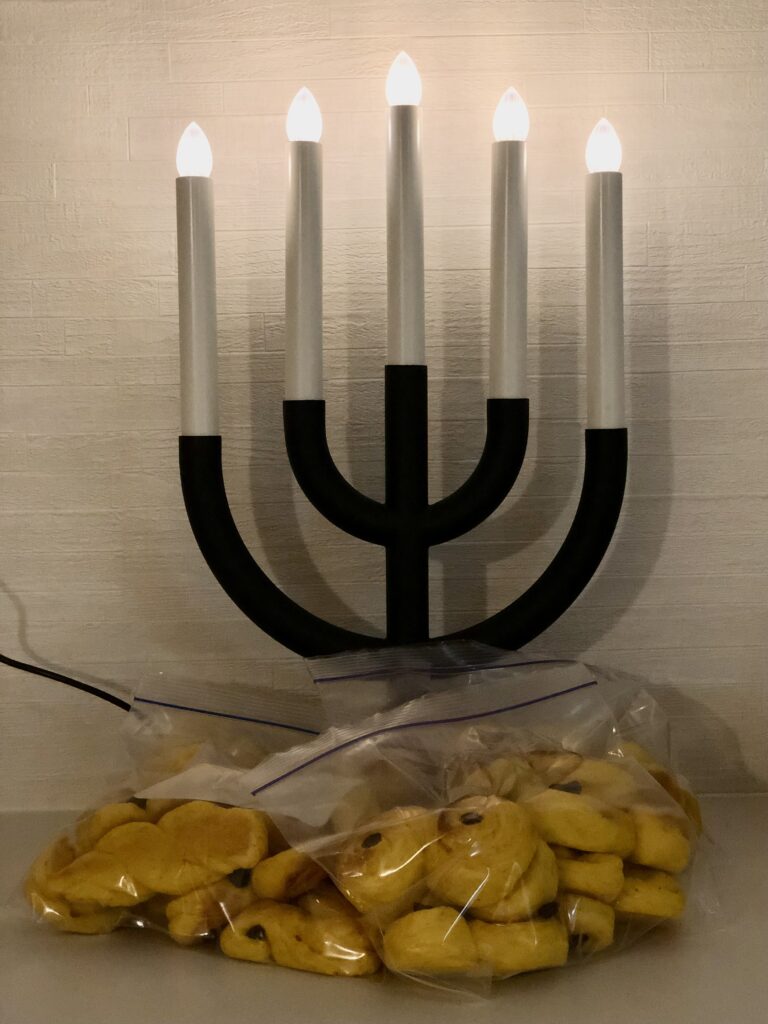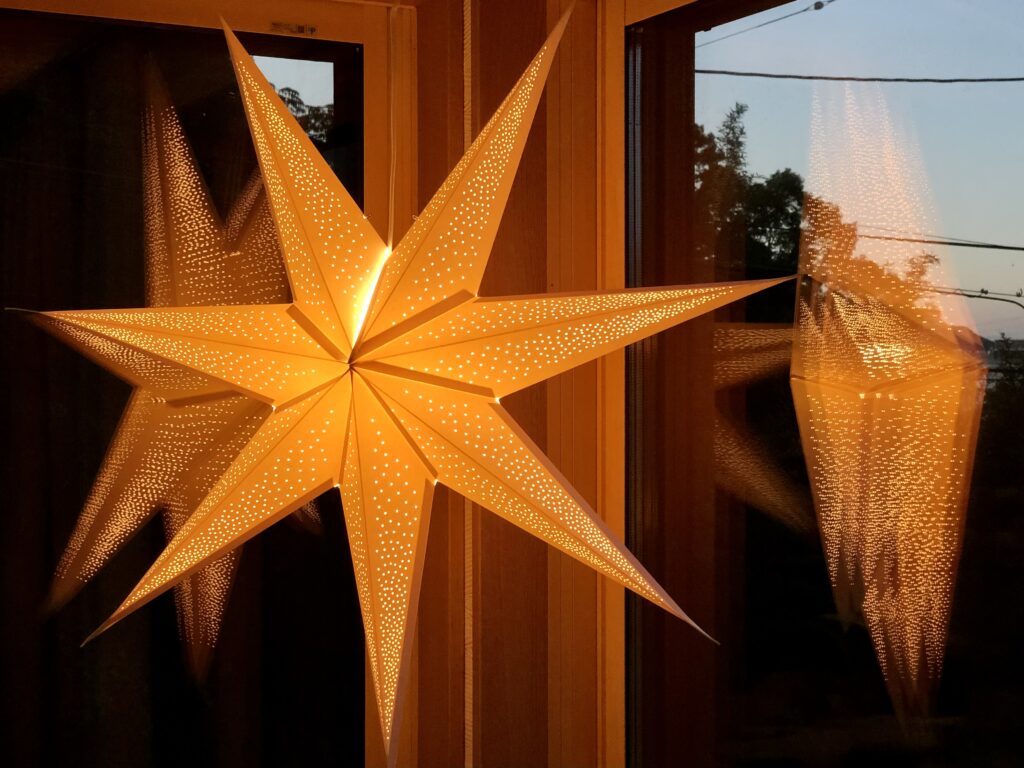Having given up our hope to go to Sweden for Christmas, we decided to try to do what we could to keep a few Swedish Christmas traditions alive here in Japan instead. In Sweden, December is dark and cold and the light in the darkness for me is literally the different lights we use when Christmas is getting closer. Shining stars in the windows and window candle holders with LED-candles can be seen in almost every home. The first of advent, the first candle in the advent candle holder is lit, and people often decorate their gardens or balconies with LED lights.
Since IKEA is big in Japan, finding what is essential for Christmas turned out to be not as difficult as I had thought. Admittedly the star we put in the window is three times as big as I would have liked, and the window LED candle holder has only five candles instead of seven which is normal in Sweden, but all in all, having spent the Sunday morning decorating the house, we managed to create a warm and cozy advent feeling. Our son, who recently has ben very very enthusiastic about the stars in the sky, became so happy when we put a star of our own in the house.
The other part of Christmas that is really important to me, is the saffron buns, or Lussekatter as we say in Swedish. Saffron buns are basically sweet bread with saffron taste, and the name Lussekatt or Lussebulle refers to the Saint Lucia celebration on December 13 and are often served for breakfast that day. My mother makes the tastiest Lussekatter in the world I think (and others as well I believe since her buns are very popular among her friends), and she sent us packages of saffron so that we would be able to make Lussekatter ourselves this year. But while we had saffron, another problem turned up.
In preparing for the first of Advent Lussekatt-making, we made a big effort of finding fresh yeast. My mom always uses fresh yeast so I wanted to try to copy her recipe as closely as I could. Our normal super market did not have fresh yeast, the delicacy shop did not have it, neither did the store stocking overseas foods. We reached out to the bakery but they would not sell us fresh yeast. We could have ordered online, but the delivery time would be more than a few days and the delivery fee more than we thought would be reasonable to pay for a little bit of fresh yeast, so we ended up buying dry yeast instead.

Our son had stayed awake all day while we prepared the decorations and the dough, and just when it was time to start kneading the dough he fell asleep. I had so looked forward to him standing on a chair next to me, playing with the dough, but there will be other chances. As it turned out, the dry yeast worked, although the fermentation process to quite some time and the dough I believe was not as fluffy as my moms (and I also believe our son would have made more beautiful saffron buns, although the last plate became quite beautiful). And the buns tasted almost like Sweden, though I dare say that I would infinitely prefer my moms Lussekatter; now I suddenly got a bit homesick.

Share this post


I confirm, you mother’s lussekatter are delicious. I have had the pleasure to taste them (not recently, you don’t have to be envious) and I liked them a lot. But I think it is more a matter of personal skills than a yeast question. I always use dry yeast in my baking, no matter if it is lussekatter, buns, bread, pizzas… The result is actually completely satisfactory.
Yes I still have a lot of work before I can start to feel skilled at baking 😊